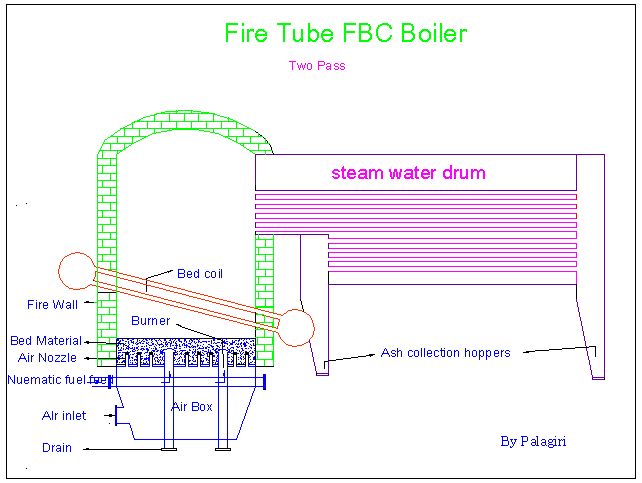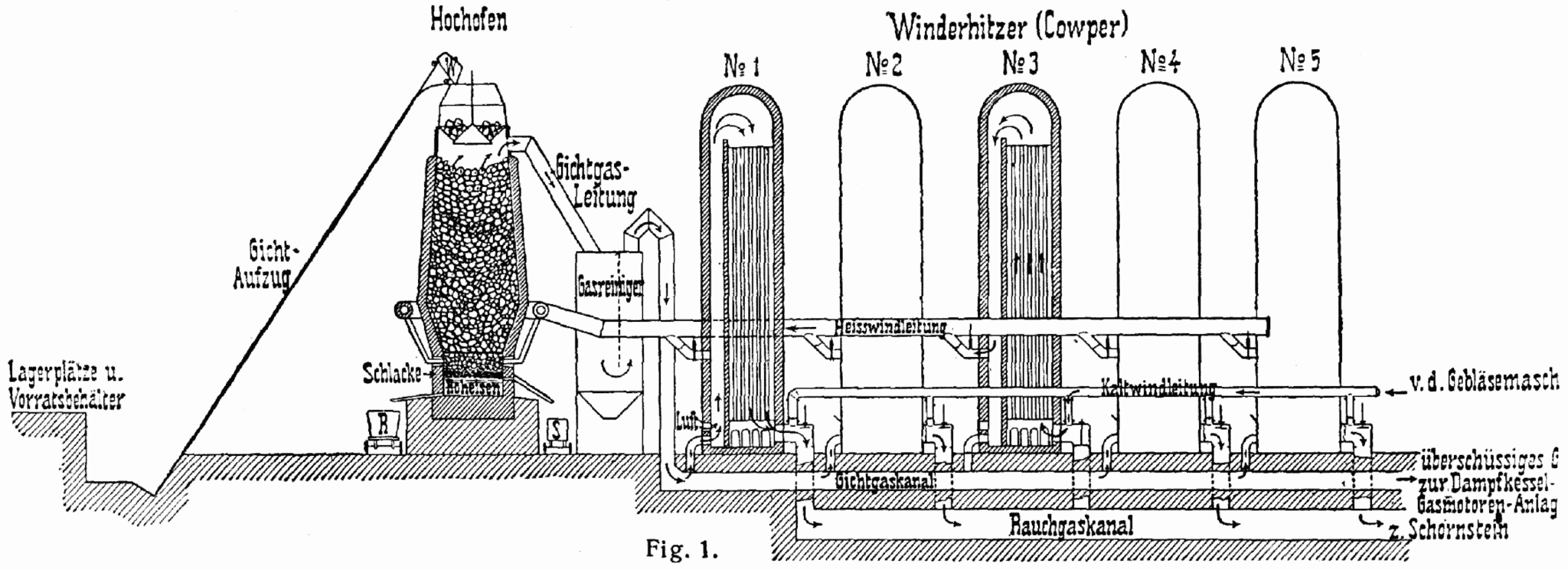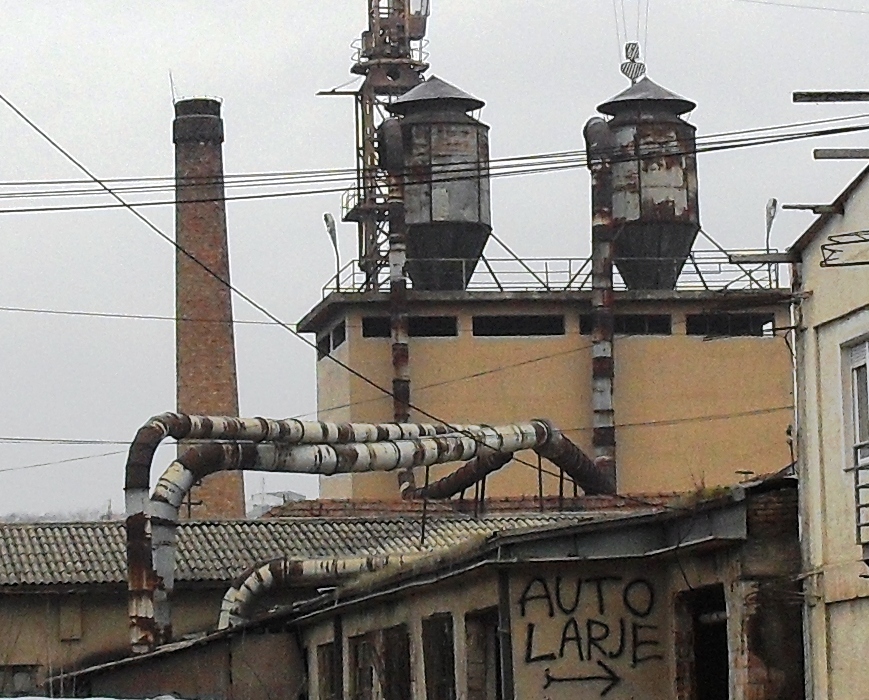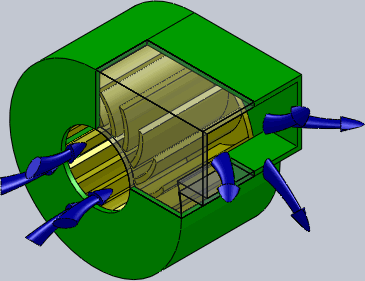|
Preheater
An air preheater is any device designed to heat air before another process (for example, combustion in a boiler With the primary objective of increasing the thermal efficiency of the process. They may be used alone or to replace a recuperative heat system or to replace a steam coil. In particular, this article describes the combustion air preheaters used in large boilers found in thermal power stations producing electric power from e.g. fossil fuels, biomass or waste. (See Chapter 8 by Z.H. Lin) For instance, as the Ljungström air preheater has been attributed worldwide fuel savings estimated to 4,960,000,000 tons of oil, "few inventions have been as successful in saving fuel as the Ljungström Air Preheater", marked as the 44th International Historic Mechanical Engineering Landmark by the American Society of Mechanical Engineers. The purpose of the air preheater is to recover the heat from the boiler flue gas which increases the thermal efficiency of the boiler by reducing ... [...More Info...] [...Related Items...] OR: [Wikipedia] [Google] [Baidu] |
Ljungström Air Preheater
Ljungström air preheater is an air preheater invented by the Swedish engineer Fredrik Ljungström (1875-1964). The patent was achieved in 1930. Even in a modern utility boiler the preheater provides up to 20 percent of the total heat transfer in the boiler process, but only represents two percent of the investment. The factory and workshop activities and laboratories in Lidingö would remain throughout the 1920s, with some 70 personnel. In the 1930s it was used as a film studio, and was finally demolished in the 1970s to give space for new industry premises. Fredrik Ljungström's technology of the air preheater is implemented in a vast number of modern power stations around the world until this day, with total attributed worldwide fuel savings estimated at 4,960,000,000 tons of oil, "few inventions have been as successful in saving fuel as the Ljungström Air Preheater". In 1995, the Ljungström air preheater was distinguished as the 44th International Historic Mechanical E ... [...More Info...] [...Related Items...] OR: [Wikipedia] [Google] [Baidu] |
Thermal Power Station
A thermal power station is a type of power station in which heat energy is converted to electrical energy. In a steam-generating cycle heat is used to boil water in a large pressure vessel to produce high-pressure steam, which drives a steam turbine connected to an electrical generator. The low-pressure exhaust from the turbine enters a steam condenser where it is cooled to produce hot condensate which is recycled to the heating process to generate more high pressure steam. This is known as a Rankine cycle. The design of thermal power stations depends on the intended energy source: fossil fuel, nuclear and geothermal power, solar energy, biofuels, and waste incineration are all used. Certain thermal power stations are also designed to produce heat for industrial purposes; for district heating; or desalination of water, in addition to generating electrical power. Fuels such as natural gas or oil can also be burnt directly in gas turbines ( internal combustion). These p ... [...More Info...] [...Related Items...] OR: [Wikipedia] [Google] [Baidu] |
Fluidized Bed Combustion
Fluidized bed combustion (FBC) is a combustion technology used to burn solid fuels. In its most basic form, fuel particles are suspended in a hot, bubbling fluidity bed of ash and other particulate materials (sand, limestone etc.) through which jets of air are blown to provide the oxygen required for combustion or gasification. The resultant fast and intimate mixing of gas and solids promotes rapid heat transfer and chemical reactions within the bed. FBC plants are capable of burning a variety of low-grade solid fuels, including most types of coal, coal waste and woody biomass, at high efficiency and without the necessity for expensive fuel preparation (e.g., pulverising). In addition, for any given thermal duty, FBCs are smaller than the equivalent conventional furnace, so may offer significant advantages over the latter in terms of cost and flexibility. FBC reduces the amount of sulfur emitted in the form of SO''x'' emissions. Limestone is used to precipitate out sulfate du ... [...More Info...] [...Related Items...] OR: [Wikipedia] [Google] [Baidu] |
Ljungström Regenerative Heat Exchanger
Ljungström is a Swedish family originating from Jönköping County, Småland, through the bailiff Johan ''Liungström'' (''floruit'' 1716, died circa 1730). Members in selection * Johan Patrik Ljungström (1784–1859), jeweler * Jonas Patrik Ljungström (1827–1898), cartographer * Georg Ljungström (1861–1930), poet * Oscar Ljungström (1868–1943), engineer, armed forces officer * Birger Ljungström (1872–1948), industrialist * Fredrik Ljungström (1875–1964), industrialist * Gunnar Ljungström (1905–1999), technical designer * Astrid Ljungström (1905–1986), journalist * Olof Ljungström (1918–2013), engineer See also * Axel Ljungströms Fabriks AB * Ljungström air preheater * Ljungström locomotive * Ljungström method * Ljungström turbine The Ljungström turbine (''Ljungströmturbinen'') is a steam turbine. It is also known as the STAL turbine, from the company name STAL ( sv, Svenska Turbinfabriks Aktiebolaget Ljungström). The technology ha ... [...More Info...] [...Related Items...] OR: [Wikipedia] [Google] [Baidu] |
Regenerative Heat Exchanger
A regenerative heat exchanger, or more commonly a regenerator, is a type of heat exchanger where heat from the hot fluid is intermittently stored in a thermal storage medium before it is transferred to the cold fluid. To accomplish this the hot fluid is brought into contact with the heat storage medium, then the fluid is displaced with the cold fluid, which absorbs the heat. In regenerative heat exchangers, the fluid on either side of the heat exchanger can be the same fluid. The fluid may go through an external processing step, and then it is flowed back through the heat exchanger in the opposite direction for further processing. Usually the application will use this process cyclically or repetitively. Regenerative heating was one of the most important technologies developed during the Industrial Revolution when it was used in the hot blast process on blast furnaces. It was later used in glass melting furnaces and steel making, to increase the efficiency of open hearth furnaces ... [...More Info...] [...Related Items...] OR: [Wikipedia] [Google] [Baidu] |
Steam Generator
A Steam generator is a device used to boil water to create steam. More specifically, it may refer to: *Boiler (steam generator), a closed vessel in which water is heated under pressure *Monotube steam generator *Supercritical steam generator or Benson boiler, a high-pressure steam generator that operates in the supercritical pressure regime, such that no boiling takes place within it. * Steam generator (auxiliary boiler), a steam-powered boiler used on ships to produce a low-pressure steam, heated by a high-pressure steam supply rather than a flame. *Steam generator (boiler), an oil- or gas-fired boiler, based on a low-water content monotube coil. *Steam generator (nuclear power), a heat exchanger in a pressurized water nuclear reactor. *Steam generator (railroad) A steam generator is a type of boiler used to produce steam for climate control and potable water heating in railroad passenger cars. The output of a railroad steam generator is low pressure, saturated steam that is pa ... [...More Info...] [...Related Items...] OR: [Wikipedia] [Google] [Baidu] |
Dew Point
The dew point is the temperature to which air must be cooled to become saturated with water vapor, assuming constant air pressure and water content. When cooled below the dew point, moisture capacity is reduced and airborne water vapor will condense to form liquid water known as dew. When this occurs via contact with a colder surface, dew will form on that surface. The dew point is affected by humidity. When there is more moisture in the air, the dew point is higher. When the temperature is below the freezing point of water, the dew point is called the frost point, as frost is formed via deposition rather than condensation. In liquids, the analog to the dew point is the cloud point. Humidity If all the other factors influencing humidity remain constant, at ground level the relative humidity rises as the temperature falls; this is because less vapor is needed to saturate the air. In normal conditions, the dew point temperature will not be greater than the air temperature, ... [...More Info...] [...Related Items...] OR: [Wikipedia] [Google] [Baidu] |
Rotating Air Preheater
Rotation, or spin, is the circular movement of an object around a '' central axis''. A two-dimensional rotating object has only one possible central axis and can rotate in either a clockwise or counterclockwise direction. A three-dimensional object has an infinite number of possible central axes and rotational directions. If the rotation axis passes internally through the body's own center of mass, then the body is said to be ''autorotating'' or '' spinning'', and the surface intersection of the axis can be called a ''pole''. A rotation around a completely external axis, e.g. the planet Earth around the Sun, is called ''revolving'' or ''orbiting'', typically when it is produced by gravity, and the ends of the rotation axis can be called the ''orbital poles''. Mathematics Mathematically, a rotation is a rigid body movement which, unlike a translation, keeps a point fixed. This definition applies to rotations within both two and three dimensions (in a plane and in space, ... [...More Info...] [...Related Items...] OR: [Wikipedia] [Google] [Baidu] |
Dust Collector
A dust collector is a system used to enhance the quality of air released from industrial and commercial processes by collecting dust and other impurities from air or gas. Designed to handle high-volume dust loads, a dust collector system consists of a blower, dust filter, a filter-cleaning system, and a dust receptacle or dust removal system. It is distinguished from air purifiers, which use disposable filters to remove dust. History The father of the dust collector was Wilhelm Beth from Lübeck. In 1921, he patented three filter designs that he had pioneered to remove dust from air. Uses Dust collectors are used in many processes to either recover valuable granular solid or powder from process streams, or to remove granular solid pollutants from exhaust gases prior to venting to the atmosphere. Dust collection is an online process for collecting any process-generated dust from the source point on a continuous basis. Dust collectors may be of single unit construction, or a c ... [...More Info...] [...Related Items...] OR: [Wikipedia] [Google] [Baidu] |
Pulverizer
A pulverizer or grinder is a mechanical device for the grinding of many different types of materials. For example, a pulverizer mill is used to pulverize coal for combustion in the steam-generating furnaces of coal power plants. Types of coal pulverizers Coal pulverizers may be classified by speed, as follows:Coal Pulverising Mill Types, by Glenn Schumacher, 2010 * Low Speed * Medium Speed * High Speed Low speed Ball and tube mills A ball mill is a pulverizer that consists of a horizontal rotating cylinder, up to three diameters in length, containing a charge of tumbling or cascading steel balls, pebbles, or rods. A tube mill is a revolving cylinder of up to five diameters in length used for fine pulverization of ore, rock, and other such materials; the material, mixed with water, is fed into the chamber from one end, and passes out the other end as a slurry. Both types of mill include liners that protect the cylindrical structure of the mill from wear. Thus the main wear ... [...More Info...] [...Related Items...] OR: [Wikipedia] [Google] [Baidu] |
Centrifugal Fan
A centrifugal fan is a mechanical device for moving air or other gases in a direction at an angle to the incoming fluid. Centrifugal fans often contain a ducted housing to direct outgoing air in a specific direction or across a heat sink; such a fan is also called a blower, blower fan, or squirrel-cage fan (because it looks like a hamster wheel). Tiny ones used in computers are sometimes called biscuit blowers. These fans move air from the rotating inlet of the fan to an outlet. They are typically used in ducted applications to either draw air through ductwork/heat exchanger, or push air through similar. impellers. Compared to standard axial fans, they can provide similar air movement from a smaller fan package, and overcome higher resistance in air streams. Centrifugal fans use the kinetic energy of the impellers to move the air stream, which in turn moves against the resistance caused by ducts, dampers and other components. Centrifugal fans displace air radially, changin ... [...More Info...] [...Related Items...] OR: [Wikipedia] [Google] [Baidu] |
Rotor (turbine)
A turbine ( or ) (from the Greek , ''tyrbē'', or Latin ''turbo'', meaning vortex) is a rotary mechanical device that extracts energy from a fluid flow and converts it into useful work. The work produced by a turbine can be used for generating electrical power when combined with a generator.Munson, Bruce Roy, T. H. Okiishi, and Wade W. Huebsch. "Turbomachines." Fundamentals of Fluid Mechanics. 6th ed. Hoboken, NJ: J. Wiley & Sons, 2009. Print. A turbine is a turbomachine with at least one moving part called a rotor assembly, which is a shaft or drum with blades attached. Moving fluid acts on the blades so that they move and impart rotational energy to the rotor. Early turbine examples are windmills and waterwheels. Gas, steam, and water turbines have a casing around the blades that contains and controls the working fluid. Credit for invention of the steam turbine is given both to Anglo-Irish engineer Sir Charles Parsons (1854–1931) for invention of the reaction turbine, and ... [...More Info...] [...Related Items...] OR: [Wikipedia] [Google] [Baidu] |







